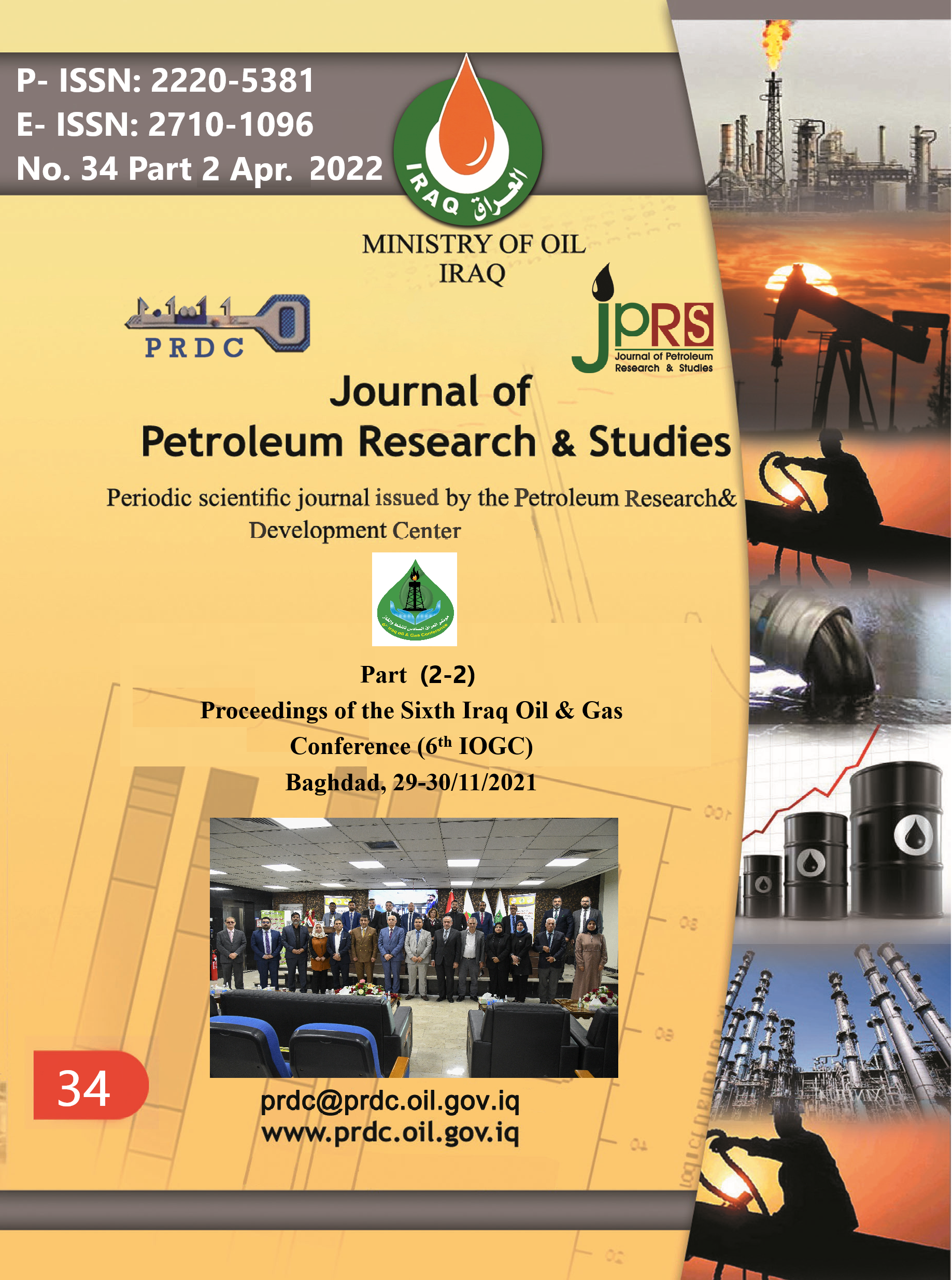Mathematical Model & Feasibility Study for Construction an Invested Refinery of 100,000 (bbl / Day) in AL-Nasiriya Governorate
DOI:
https://doi.org/10.52716/jprs.v12i1(Suppl.).628Keywords:
CAPEX, OPEX, Depreciation, NPV, IRR, PI.Abstract
A mathematical Model and feasibility study of construction an invested Refinery with 100,000 (Bbl/day) in AL-Nasiriya governorate was performed. The project is composed of three Units, Atmospheric Column Distillation Unit (CDU), Catalytic Reformer Unit (CRU) and Residue Fluidized Catalytic Cracking Unit (RFCC) that produce different products. Based on the Platts prices of petroleum products which was provided by State Organization for Marketing of Oil (SOMO) for May of this year and by standard specifications and technical information of Petroleum Research and Development Center (PRDC), Material balance for feed and products as well as optimization process using LINGO software for these three Units were calculated in order to determine influential financial parameters: (NPV), (IRR), (PI) and Payback period of the project. Different calculation scenarios were prepared taking into account discount of crude oil and products prices, inflation indicator of Capital expenditure (CAPEX) and operation expenditure (OPEX) in addition to extending the life of the project and increase in the cost of capital as well. These scenarios are illustrated as followings: -
1- The refinery was considered non-feasible in case of the crude feed price is taken (65$) and the products prices still constant. Discounted of oil feed was taken gradually by 10% and the products prices stay constant turns the project to be feasible at (50%) discounted oil price which gives positive financial parameters as can be seen in scenario (1), (2) but no longer feasible when increasing inflation by (3%) and (5%) as shown in scenario (3) and (4).
2- The price of crude oil feed was taken constant (65$) and the products prices were gradually increased by (10%) till (50%) with constant other parameters gives negative financial parameters means non feasibility as can be seen in scenario (5).
3- Increasing products prices by 10% and discount crude oil price by 10% together makes the project feasible at (25%) for both as shown in scenario (6). Conversely, when inflation was taken into account for OPEX and cost of capital, the project shifted to be feasible at (40%) for both crude oil and products as seen in scenario (7, 8, 9). The crude oil feed price and products was increased gradually by (10%) and decreased by the same percent. Both scenarios give negative financial parameters as shown in (10) and (11).
4- Extending life of project from (4) to (6) years and let other parameters constant including CAPEX to study the impact on the financial parameters. It is noticed that the refinery gives negative income compared to previous period of project in scenarios (12), (13). The cost of capital was increased from 2,100 million to 3000 million with no change in the other parameters gives negative income as seen in scenario (14) and (15). On the other hand, cost of capital and life of project were changed together makes the project worse income due to decline in the financial parameters as illustrated in scenario (14) and (16).
References
M. Kancijan, M. Ivanjko, P. Ilak, and S. Krajcar, “An oil refinery production optimization,” IYCE 2015 - Proc. 2015 5th Int. Youth Conf. Energy, pp. 1–11, 2015, doi: 10.1109/IYCE.2015.7180772.
M. A. Abul-Hamayel, “Atmospheric residue as feedstock to high-severity fluid catalytic cracking,” Pet. Sci. Technol., vol. 20, no. 5–6, pp. 497–506, 2002, doi: 10.1081/LFT-120003574.
K. W. Holbrook, “Refinery Economics.,” Transp. Res. Rec., pp. 6–9, 1984, doi: 10.1016/b978-0-444-52785-1.00018-8.
J. D. Wright, “PEH : Petroleum Economics,” pp. 1–39, 2021.
S. A. Treese, P. R. Pujadó, and D. S. J. Jones, Handbook of petroleum processing, vol. 1. 2015.
L. E. Schrage, Optimization Modeling with LINDO, Sixth Edit., no. 312. Chicago, Illinois: LINDO SYSTEMS INC, 1997.
S. Jiang, “Optimisation of Diesel and Gasoline Blending Operations,” p. 99, 2016, [Online].Available:https://www.research.manchester.ac.uk/portal/files/61847556/FULL_TEXT.PDF.
M. E. Mcdill, “C 3: f a i,” in Forest Resorce Management, pp. 1–26.
M. Kvaal, “Basic Petroleum Economics,” no. August, pp. 1–23, 2004, [Online]. Available:http://www.ccop.or.th/ppm/document/CHWS2/CHWS2DOC10_henriksen.pdf.
P. M. Ikpeka and C. Mbagwu, “Petroleum and Coal Article,” Pet. Coal, vol. 61, no. 1, pp. 32–51, 2018.
Downloads
Published
How to Cite
Issue
Section
License
Copyright (c) 2022 Omar M. AL-Azzawi, Harith I. Mohammed, Hussam J. Mousa, Assad O. Rabet, Sura K. Hussein

This work is licensed under a Creative Commons Attribution 4.0 International License.














